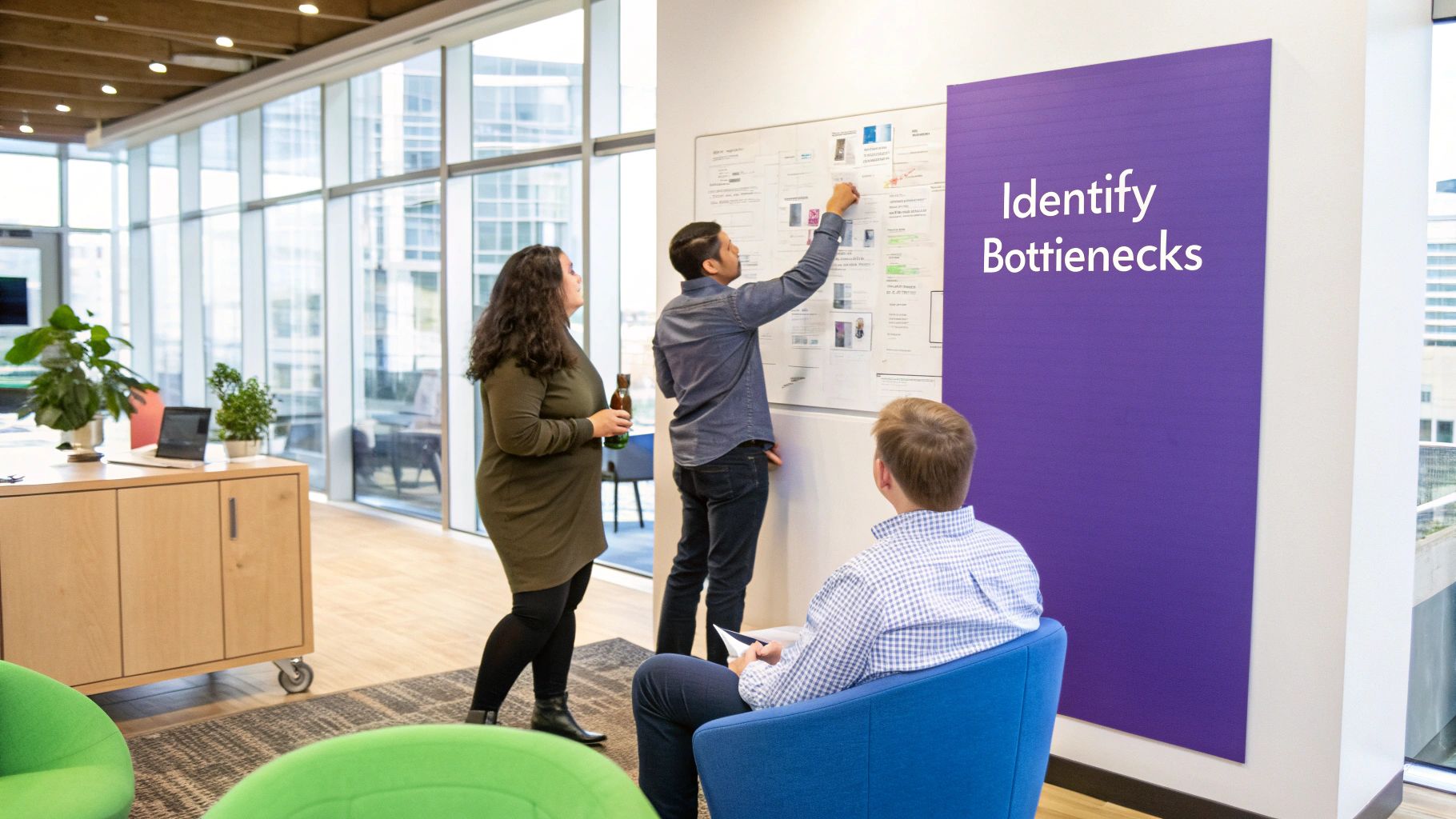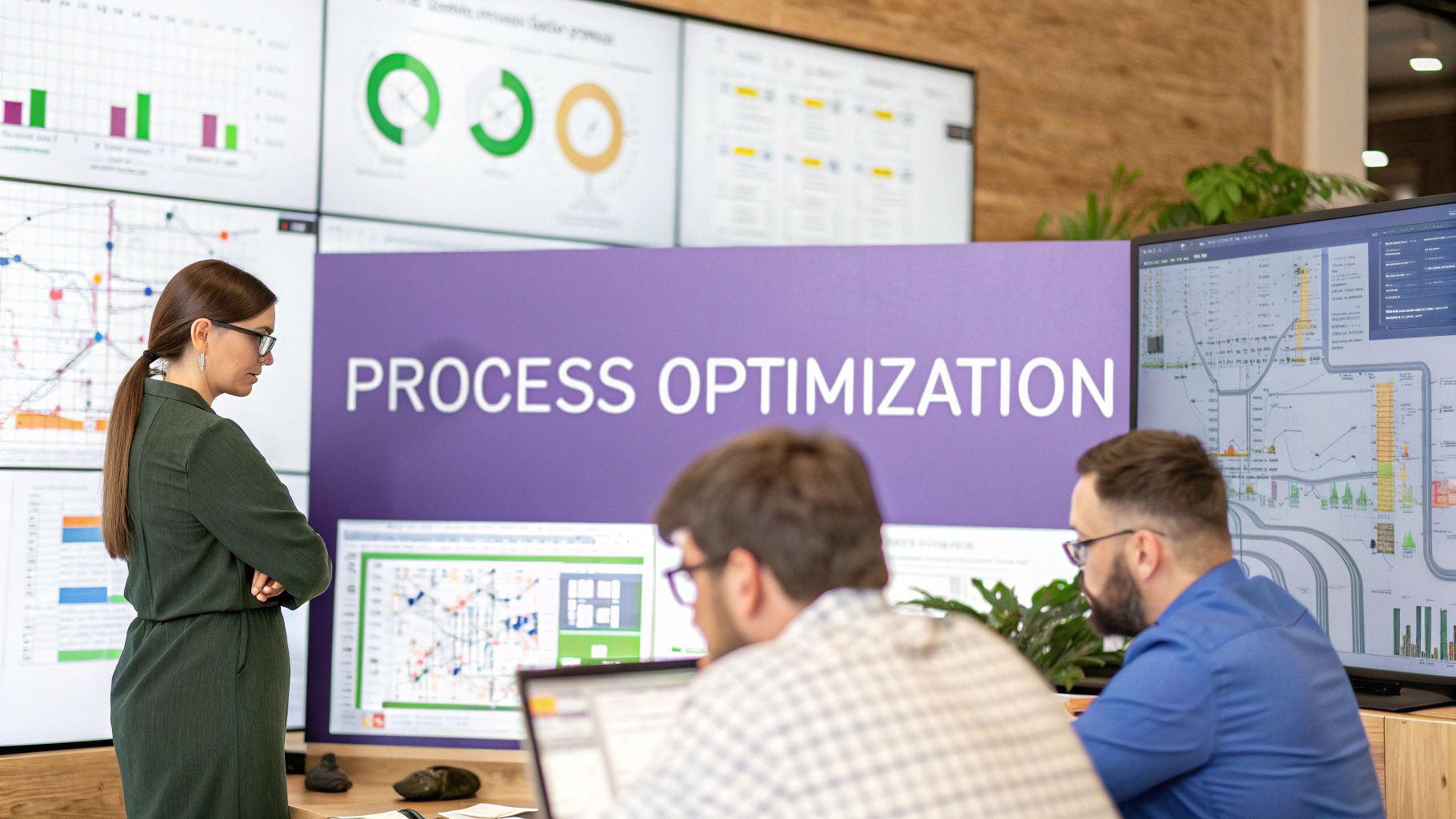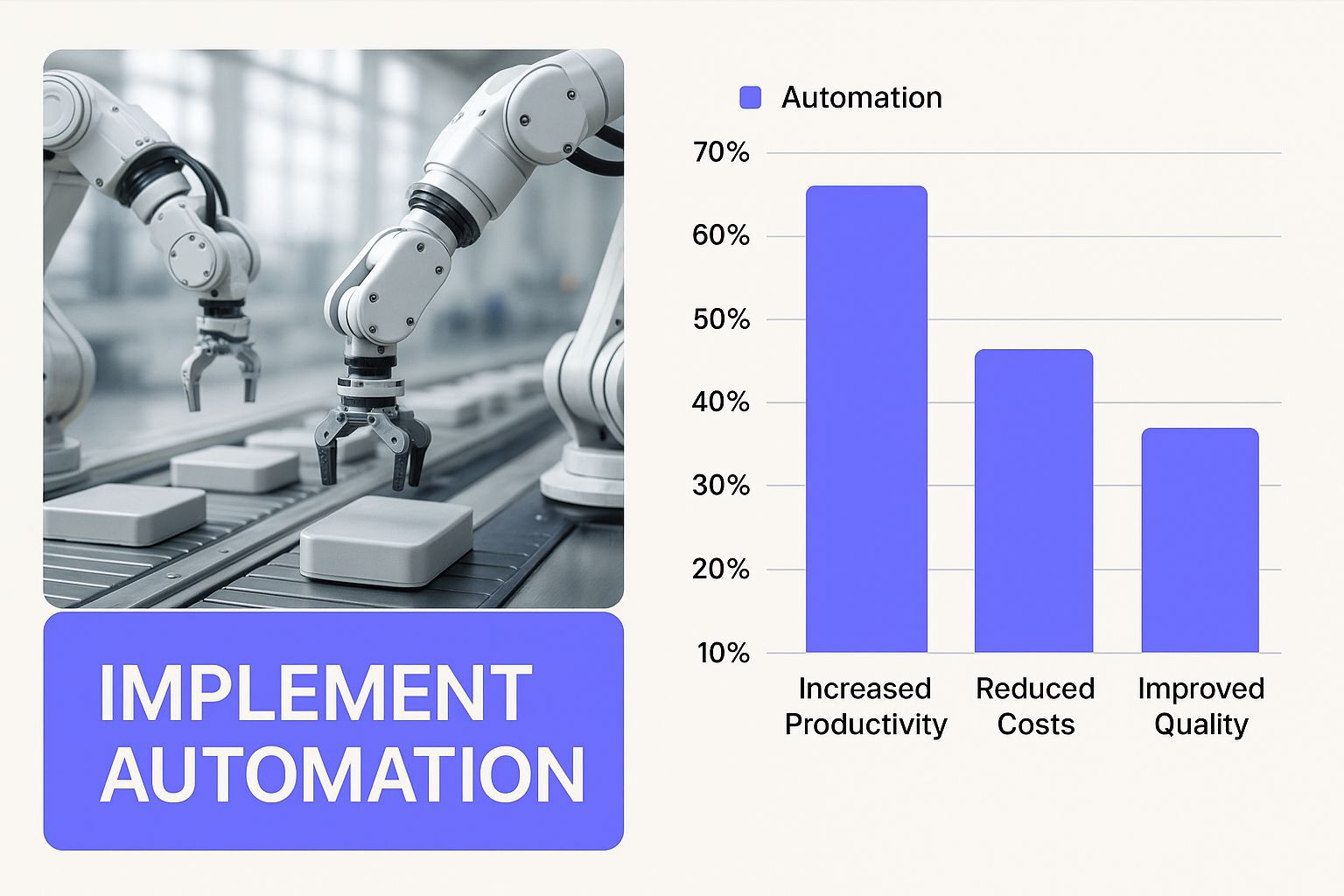Optimising your business processes is about analysing, redesigning and implementing workflows to boost efficiency, cut costs and deliver more value. It’s a strategic push to remove waste and make your organisation more agile. But here's the secret. Real success comes from putting your people before your platforms.
Why Process Optimisation Fails Before It Even Starts

Many leaders think the first step to optimising a business process is buying new software. A slick CRM, a shiny automation platform, or an all-in-one project management tool is often pitched as the silver bullet for operational chaos. This is precisely where most projects are doomed from the start.
Leading with technology is an understandable instinct. It feels tangible, decisive and forward-thinking. But it skips the most critical step: asking why the current process is so inefficient in the first place. The answer, almost without fail, is about people.
The human reality of broken workflows.
Before any software can help, you must cut through the operational fog. In all our years of doing this, we've found the real blockers are rarely technical. They are distinctly human and organisational issues that no platform, no matter how clever, can solve on its own.
The usual suspects are always lurking just beneath the surface:
- Siloed teams. Departments operate in their own bubbles, clumsily passing information between them. This is a recipe for delays and endless rework.
- Unclear ownership. When nobody has clear accountability for a process from start to finish, steps get missed and problems are ignored until they become crises.
- A culture of workarounds. Teams create their own unofficial, often manual, ways to get their jobs done because the "official" process is broken.
- Fear of change. A long history of failed initiatives can create deep-seated resistance. People start to doubt that this time will be any different.
True transformation is not about buying software. It is about clarifying how your people work together towards shared goals. Then you choose tools that support that human collaboration.
Jumping straight to a tech solution without tackling these root causes is like building a house on a shaky foundation. You’re just automating the existing confusion, embedding bad habits into a new and expensive system.
This guide reframes process optimisation as a strategic, people-led activity. We map what is really happening.











